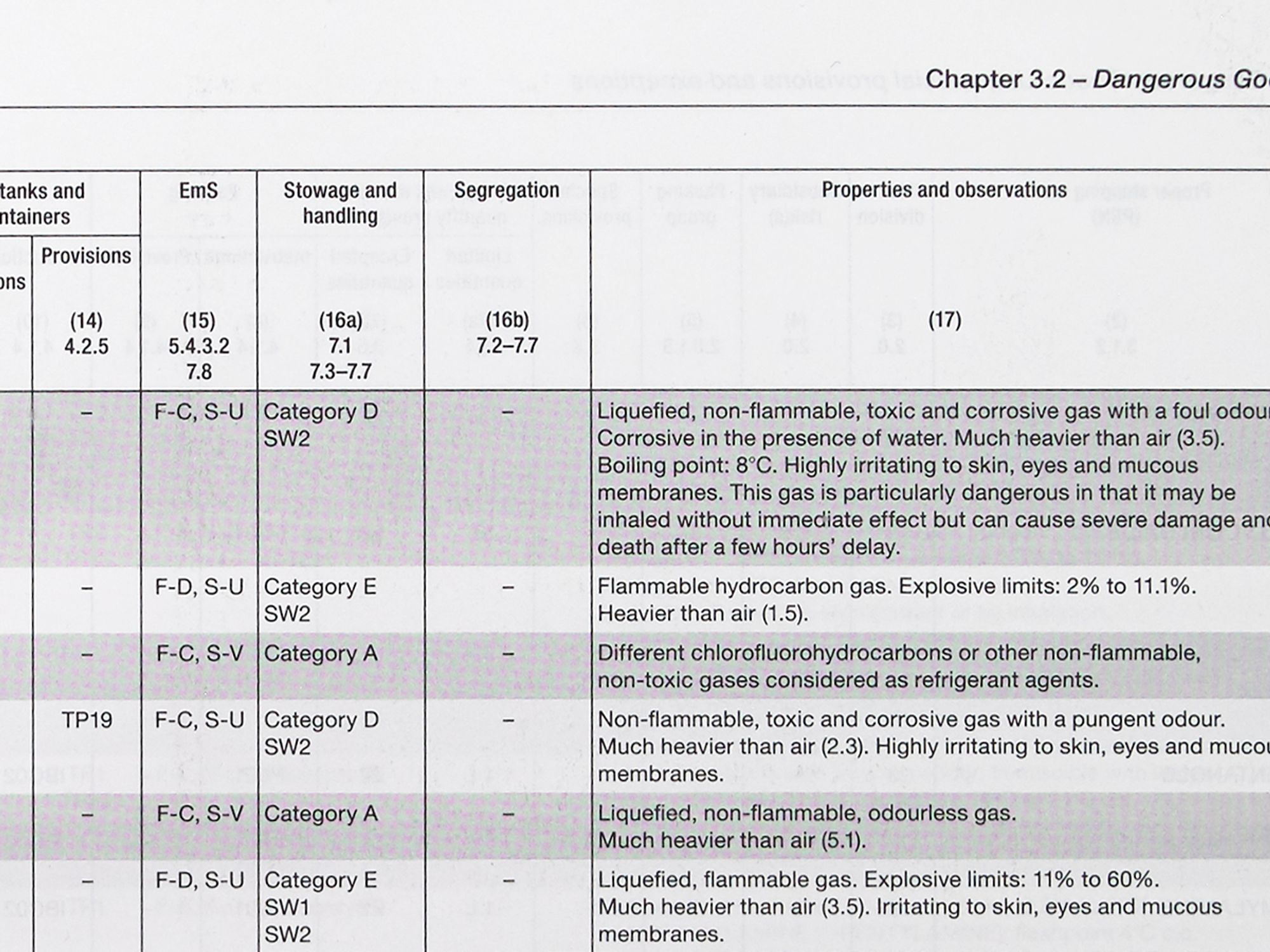Breakdown of the IMDG Dangerous Goods List

- The Dangerous Goods List is divided into 18 columns, each one referencing the section in the IMDG code where additional information about requirements can be found.
The Dangerous Goods List is found in the International Maritime Dangerous Goods (IMDG) Code Chapter 3.2. The List is divided into 18 columns. Each column includes a reference to the appropriate section in the IMDG Code that provides additional information for that requirement.
- Column 1 contains the United Nations (UN) number assigned by the United Nations Sub-Committee of Experts on the Transport of Dangerous Goods.
- Column 2 contains the proper shipping names.
- Column 3 contains the class assigned to the dangerous good. For class 1, the division and the compatibility group are also included.
- Column 4 contains the class number(s) of any subsidiary hazard(s) that have been identified. This column also identifies marine pollutants.
- Column 5 contains the packing group number (I, II or III) assigned to the substance or article.
- Column 6 contains a number referring to any special provision(s) relevant to the substance or article.
- Column 7a provides the maximum quantity per inner packaging or article for transporting dangerous goods as limited quantities.
- Column 7b provides a code that indicates the maximum quantity per inner and outer packaging for transporting dangerous goods as excepted quantities.
- Column 8 contains codes that refer to the relevant packing instruction(s). The packing instructions indicate which packagings may be used to transport each substance or article.
- Column 9 contains codes that refer to relevant special packing provisions.
- Column 10 contains codes that refer to the relevant intermediate bulk container (IBC) packing instructions, indicating the type of IBC that must be used for transport of the substance under reference. When a code is not provided, it means the substance is not authorized in IBC.
- Column 11 contains a code indicating IBC special provisions, which refers to special packing provisions that apply to the use of packing instructions bearing the code “IBC.”
- Column 12 is reserved.
- Column 13 contains codes for tank and bulk container instructions that apply to the transport of dangerous goods in portable tanks and road tank vehicles.
- Column 14 contains TP notes indicating tank special provisions that apply to the transport of dangerous goods in portable tanks and road tank vehicles. The notes in this column apply to the portable tanks specified in column 13.
- Column 15 refers to the relevant emergency schedules for FIRE and SPILLAGE in “The EmS Guide ¬ Revised Emergency Response Procedures for Ships Carrying Dangerous Goods.” For n.o.s. or other generic entries, the most relevant emergency response procedures may vary with the properties of the hazardous constituents. Shippers may have to declare different EmS codes from those indicated, if, to their knowledge, such codes are more appropriate. The provisions in this column are not mandatory.
- Column 16a contains the stowage and handling codes.
- Column 16b contains the segregation codes.
- Column 17 contains properties and observations for the dangerous goods listed. The provisions in this column are not mandatory.
- Column 18 contains the UN number, as shown in column 1, for ease of use of the table.
Special provisions
When column 6 of the Dangerous Goods List indicates that a special provision applies to a dangerous good, the requirements of that special provision are listed in numerical order amid nearly a thousand entries in Chapter 3.3 of the Code.
If a special provision includes a requirement for package marking, the provisions of section 5.2.1.2 must be met. If the required mark is specific wording in quotation marks, the size of the mark must be at least 12 mm, unless otherwise indicated in the special provision or elsewhere in the Code.
